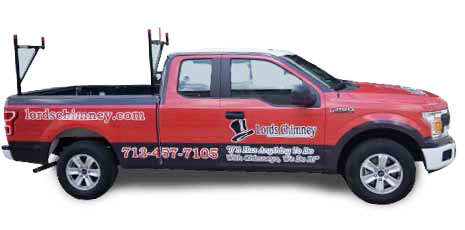Fireplaces are a beautiful addition to any room that can provide warmth and ambiance throughout the cold winter months. However, most homeowners pay more attention to what they get out of their fireplaces than what they put in.
What materials you burn in your fireplace can have a direct impact on fireplace performance. In addition, attempting to burn materials that are not meant for residential fireplaces can pose a safety hazard through unmanageable burning or the release of toxic chemicals.

Garbage
More popular in rural areas and communities, burning garbage is not a safe way to dispose of your trash. While there are a growing number of waste-to-energy factories in the United States that burn trash to create useable electricity, these plants are specially designed to filter any toxins or chemicals out of the air supply. Homeowners simply do not have the technology to do this, causing the chemical byproducts of whatever is being burned to enter the atmosphere. Backyard burning has been found to increase the risk of heart disease, aggravate asthma and emphysema, and can also cause rashes, nausea, or headaches.
Green wood
Homeowners should avoid burning green, or freshly cut wood, whenever possible. While green wood will burn, it produces less heat than seasoned firewood because more energy is needed to evaporate the remaining water in the wood itself. In addition, green wood produces large amounts of smoke, which can easily backdraft and fill a room. Finally, burning green wood produces more creosote, a gummy, corrosive, and highly flammable substance that coats the inside of the chimney structure.
Paper products
While burning used wrapping paper or pizza boxes may seem like an easy way to dispose of them, it can actually create a chimney fire. Paper burns extremely quickly, which can cause an enormous increase in the amount of flames if too much is put into the fireplace. These large fires cannot be contained by the firebox, causing flames to travel up the chimney or out into the room.
In addition, most wrapping paper and other printed products are not designed to be burned. While companies based in the United States use approved chemicals and dyes in their paper products, most printed paper produced outside the country does not. Because of this, colored wrapping paper may produce toxic chemicals when burned. Instead of burning them, wrapping paper, cardboard, and other paper products should be recycled or thrown away in the regular trash.
Pretreated wood
After removing old fencing, decking, or playground equipment, many homeowners believe that using the old materials as firewood is an appropriate way to recycle them. However, any wood that has been exposed to glue, paint, stain, varnish, or other chemical treatments should never be burned. The EPA recommends that homeowners “never burn coated, painted, or pressure-treated wood because it releases toxic chemicals when burned.”
Styrofoam
Although Styrofoam burns quickly, putting it into the fireplace is an environmental hazard. When burned, Styrofoam and other packing foams erupt in a cloud of toxic black smoke, releasing chemicals that can damage the nervous system and lungs. In addition, the melted foam particles can stick to the inside of the firebox and chimney structure, creating a future fire hazard if they were to reignite.
Instead, homeowners should only burn properly seasoned firewood in their fireplaces. While different species of trees have different burn characteristics, being dry is by far the most important characteristic of any potential firewood.
We know you care about keeping your family safe. One way to keep your family safe while at home is to minimize the likelihood of a deadly chimney fire. One way to minimize this risk is to make sure you do not allow creosote to accumulate.

Creosote is no laughing matter. The professionals at Lords Chimney can provide you with a wealth of information and service to give you that added peace of mind!
For homeowners with chimneys, there is one other thing that they worry about specifically – creosote. According to our team of experts here at Lords Chimney, more than 70% of the inquiries and concerns we receive from our loyal customers involve creosote in some form or fashion. So what exactly is creosote anyway?
If you look online you’ll see a lot of definitions filled with scientific jargon that would just confuse you a lot more than you may already be. But the definition from the Agency for Toxic Substances and Disease Registry describes and defines creosote in a simple and uncomplicated way. According to the ATSDR, creosote is basically the chemical byproduct of burning. There are different varieties of creosote. There’s the Wood, Coal Tar Pitch, Coal Tar Pitch Volatiles and Coal Tar. But basically they are all referred to collectively as creosote.
Why should we worry?
Although seemingly harmless during the beginning stages, creosote can quickly become extremely dangerous when left alone. You see, since it is a byproduct of burning, this means that it would constantly be produced whenever there’s burning of any kind in your chimney system. Once it is produced, it sticks to various parts of the fireplace and chimney. If it accumulates further, it becomes this thick volatile layer that is one of the number one culprits of chimney and house fires.
What can we do?
The best thing we can do to prevent things from getting out of hand is to properly maintain your chimney. Schedule regular inspections and cleanings to make sure that creosote build-up never gets a chance to reach threatening levels, which, in turn, would guarantee safety for your home and your family. So what are you waiting for? Pick up a phone and schedule an appointment right now. You can count on us for quality and dependable chimney and fireplace services. Lords Chimney is ready to help!
A fireplace can be a wonderful addition to any room in the house where the family might gather, providing warmth, light, and a cozy ambiance. However, a fireplace system has to be carefully maintained to make sure that they common problems that affect chimneys don’t impact the safety and beauty of your family’s favorite gathering spot. We as homeowners owe it to ourselves to remain constantly vigilant as far as the condition of any part of our homes are concerned. Like every appliance or piece of furniture we own, a chimney requires just as much attention; one could even argue that it requires more attention.
Creosote
Creosote, the byproduct of burning wood, builds up on the sides of the flue system and the firebox area. Over time, this buildup can cause blockages that result in flue fires or potentially a whole-house fire. A buildup of as little as 1/8 – 1/4” is more than enough to create a fire hazard. Regular cleaning eliminates the chance for creosote to develop on chimney surfaces.

This little critter is just one of the many things that could potentially block your chimney. Call the experts to have your chimneys cleared.
Animals
Birds, squirrels, or raccoons, among other animals, get in the chimney and cause issues inside that include smells, noises, blockage, and even fires. In addition to these concerns, the animals themselves may clog the chimney and, in some cases, could even carry diseases that could spread into your home. Chimney caps with spark arrestors are a common means to prevent animals from entering the space and nesting.
Leaves and Debris
Because of the location of your chimney, leaves and debris can build up in and around the chimney year round. These things can clog the chimney, which is far more dangerous than it sounds. If the chimney is clogged, it will keep smoke and combustible gases in the home rather than letting them out. This can lead to any number of health risks as well as an increased risk of fire.
While the firebox of the fireplace system can be easily seen and therefore monitored by the homeowner, the chimney itself commonly faces a number of troubles that are often caught only by a chimney professional. Your annual chimney inspection, sweeping and cleaning will help to ensure its safety and continued functionality for years to come. You can always come to Lords Chimney with any of your questions or needs. Our staff is always here to help.




